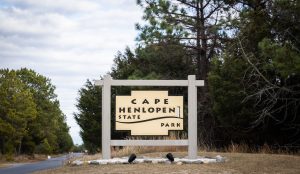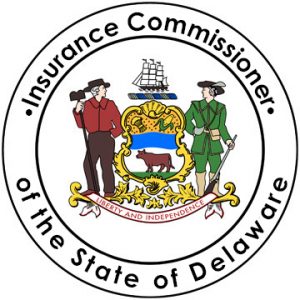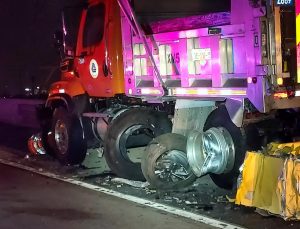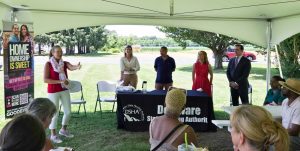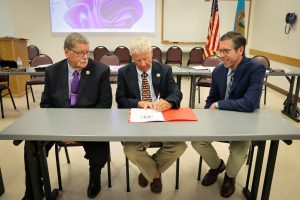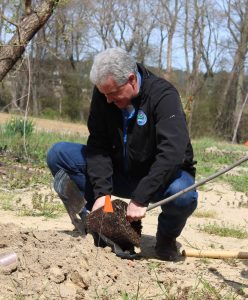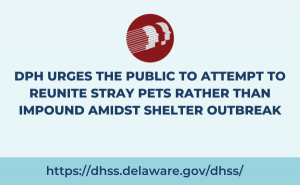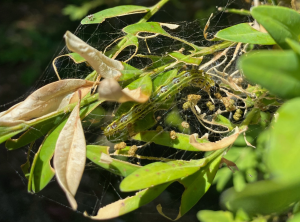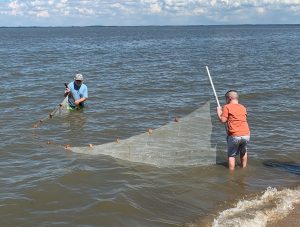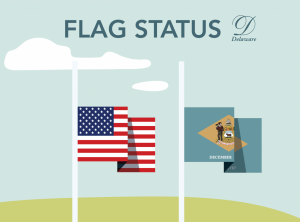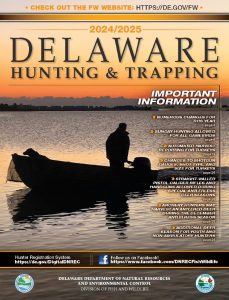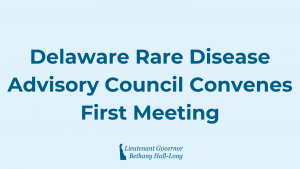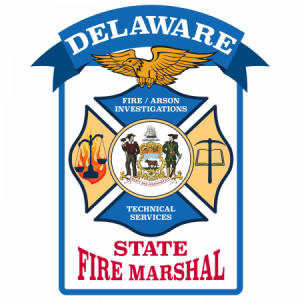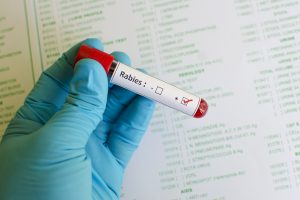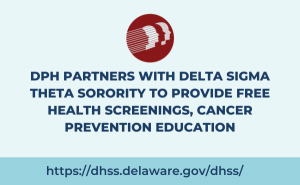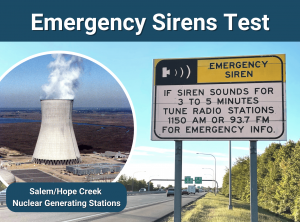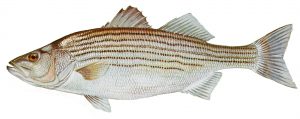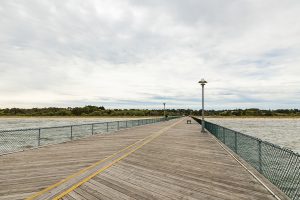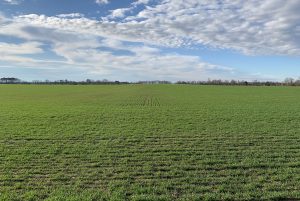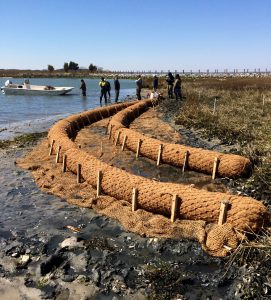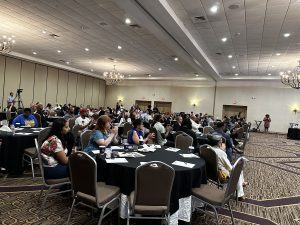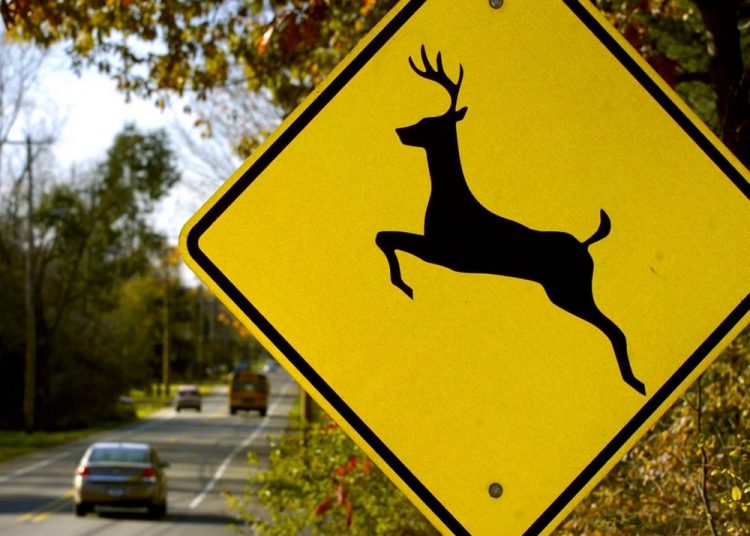
Peak Deer Activity Calls for Vigilance at Dawn, Dusk and Night
Late October through November is prime time for increasing white-tailed deer activity in Delaware, leading up to their peak mating season in mid-November. With more deer crossing roadways, along with shorter days ahead, especially after the Nov. 1 change from daylight saving time back to Eastern Standard Time, motorists are urged to be on high alert to avoid collisions with these large animals.
“Bucks are very single-minded in their pursuit of does during the rut, their mating season, which lasts from October to December and peaks from Nov. 10 to 20. If that pursuit takes a buck or doe across a roadway in front of your vehicle, that’s where they’re going to go, whether it’s Route 1 or a rural road,” said Program Manager Joe Rogerson with the Department of Natural Resources and Environmental Control. “Drivers should pay particular attention on roads bordered by woods or agricultural fields, since deer typically cross between areas of cover, but not always.”
Although deer in roadways are a year-round hazard, national and state statistics indicate the last three months of the year are the most likely time for accidents. The Delaware Office of Highway Safety (OHS) reported the peak time in November 2019 with 461 crashes, more than double the 224 in October and triple the number reported in December, the other two highest months.
Deer tend to be most active in early morning and at dusk. According to OHS, deer-vehicle collisions occur most often between 6 and 7 a.m. and peak again between 5 and 7 p.m., a timeframe when many workers are heading home.
“Crashes involving deer are more frequent at dawn and dusk. Reduced visibility for drivers during these time periods make it more difficult to see deer approaching or crossing roadways,” said Kimberly Chesser, Director of the Delaware Office of Highway Safety. “The Office of Highway Safety urges drivers to remain focused, keeping their eyes on the road at all times, and reduce their speed when visibility is an issue.”
According to Delaware State Police (DSP), more than 1,800 crashes involving animals occurred on Delaware roads in 2019, 60 of which caused personal injuries and one resulted in a fatality.
“Deer dart across secondary roadways on a frequent basis, especially in the fall, but keep in mind they may also cross roadways during the day or in areas where there is ample lighting at night,” said Sgt. Darren Lester, Delaware State Police. “Travelers are always much safer when keeping full attention on their driving. This may not always prevent a deer-related crash, but it can certainly help minimize damage and/or injuries.”
The average white-tailed deer in Delaware weighs about 130 pounds, with larger bucks tipping the scales at 200 pounds or more. Hitting an animal that size can do serious and expensive damage to vehicles. Such a collision may also cause injury to drivers or passengers or trigger an accident involving other motorists.
AAA Mid-Atlantic notes the average claim submitted to AAA Insurance for a deer strike is more than $4,000. To avoid a large out-of-pocket expense, AAA recommends purchasing an auto policy including comprehensive coverage, which covers collisions with deer or other animals.
Based on reported insurance claims from July 1, 2019 to June 20, 2020, State Farm Insurance ranked Delaware 27th in the nation, with Delaware drivers having a 1 in 109 chance of animal collision.
DNREC, OHS, police agencies and auto insurance companies all agree: the best way to prevent or lessen the severity of deer collisions is attentive driving, which includes avoiding distractions that might take a driver’s eyes off the road, such as mobile phones, adjusting the radio, eating or passenger activities.
Additional safety tips include:
- Always wear your seatbelt to reduce your risk of injury in a collision.
- Reduce speed at night, on curves and in bad weather.
- Switch to high beams when there is no oncoming traffic to better reflect the eyes of deer on or near the roadway and scan the sides of the road as well as what’s directly ahead.
- Watch for “Deer Crossing” signs marking commonly-traveled areas on the road ahead. Slow down immediately and proceed with caution until past the crossing point.
- Deer usually travel in groups, so if you see one deer, there are likely to be others.
- Slow down and blow your horn with one long blast to frighten deer away. Do not rely on devices such as deer whistles, deer fences and reflectors to deter deer, as these devices have not been proven to reduce deer-vehicle collisions.
- Do not swerve to miss a deer — brake and stay in your lane. Losing control of your vehicle, crossing into another lane, hitting an oncoming vehicle, or leaving the roadway and hitting another obstacle such as a tree or pole will likely be much more serious than hitting a deer.
- If you hit a deer, stop at the scene, get your car off the road if possible, turn on your vehicle hazard lights and call 911.
- Do not touch the animal or get too close; an injured deer may bite or kick, causing serious injury.
For more information about deer in Delaware, visit white-tailed deer or contact the DNREC Division of Fish and Wildlife at 302-739-9912.
About DNREC
The Delaware Department of Natural Resources and Environmental Control protects and manages the state’s natural resources, protects public health, provides outdoor recreational opportunities and educates Delawareans about the environment. The Division of Fish and Wildlife conserves and manages Delaware’s fish and wildlife and their habitats, and provides fishing, hunting, wildlife viewing and boating access on nearly 65,000 acres of public land. For more information, visit the website and connect with DNREC on Facebook, Twitter or LinkedIn.
About Delaware Office of Highway Safety
The Office of Highway Safety (OHS) is committed to improving the safety of Delaware’s motoring public by focusing on behavioral traffic safety issues such as impaired driving, seat belt use, speeding, child passenger safety, pedestrian and bicycle safety, motorcycle safety, and teen driving issues. FAQs can be answered at ArriveAliveDE.com. You can follow the Delaware Office of Highway Safety by visiting us at: ArriveAliveDE.com, OHS, Facebook, Twitter, Instagram, LinkedIn, Snapchat, and YouTube.
About AAA
AAA provides automotive, travel, and insurance services to 60 million members nationwide and more than 148,000 members in Delaware. AAA advocates for the safety and mobility of its members and has been committed to outstanding road service for more than 100 years. AAA is a non-stock, non-profit corporation working on behalf of motorists, who can now map a route, find local gas prices, discover discounts, book a hotel, and track their roadside assistance service with the AAA Mobile app for iPhone, iPad and Android. For more information, visit www.AAA.com.
Media Contacts:
DNREC: Joanna Wilson, joanna.wilson@delaware.gov
OHS: Kimberly Chesser, Kimberly.chesser@delaware.gov
DSP: Sgt. Darren Lester, Darren.lester@delaware.gov; Master Cpl. Heather Pepper, Heather.Pepper@delaware.gov; Cpl. Jason Hatchell, Jason.Hatchell@delaware.gov
AAA: Ken Grant, KGrant@aaamidatlantic.com
###






